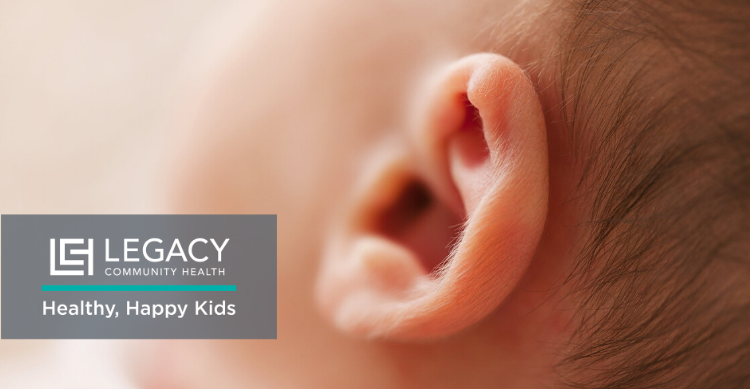by Dr. Jessica Brown MD, MPH
Ear infections are one of the most common illnesses doctors treat in children, especially during the cold weather months. Ear infections are notorious for making little ones miserable, as well as their parents. Though most common between the ages of 6 and 24 months, older children, as well as adults, can come down with an ear infection. Because young children and infants have smaller middle ears and drainage tubes, they get more frequent ear infections.
Most ear infections begin with a cold. General nasal congestion from the cold, as well as inflammation and swelling in the nose, can lead to a blockage in the middle ear. This blockage prevents fluid from draining, which builds up and can cause increased pressure and pain behind the ear drum. When that fluid stays too long, bacteria can breed and cause an infection.
Ear infections are mostly caused by viruses, like the cold virus. Some children are more prone to bacterial causes or have complications due to bacteria. These children usually require antibiotics. It’s very important to note that many older children do not require antibiotics for their ear infection to clear.
The most common symptoms include: nasal congestion, cough, fever, decreased appetite, ear pulling/pain or the child patting one side of their head, unwillingness to lay to one side, and ear drainage.
While there isn’t always a “cure” for an ear infection, there are ways that can help drain ears more efficiently.
Keep noses clean
There is a connection between the nose and ear drainage. If you can keep your child’s nose reasonably clear, it helps the ears drain too. Try over-the-counter nasal saline drops or sprays for children. Babies often do well with nasal suctioning with a bulb suction or a nasal aspirator. You can clear your child’s nose as often as you’d like but every 1-2 hours can make a big difference. Avoid medications with decongestants in children 6 years old and under unless recommended by your child’s pediatrician.
Stay hydrated
Your child will need to drink more fluid than normal due to the extra fluid loss from fever and illness. If they are over a year old, water, milk, and Pedialyte are all good options. Younger children should stick with formula or breast milk. If your child cannot keep down fluids or it’s been 8 hours since they last urinated, seek immediate medical attention.
Control pain and fever
Since ear infections can be very painful, you usually can give Acetaminophen (Tylenol) or Ibuprofen (Motrin) every 6-8 hours. If your child remains in pain, you can alternate these medications to give one or the other every 3 hours. For example, if the first dose of acetaminophen is at 12pm, you can give a dose of ibuprofen at 3pm, then acetaminophen at 6pm, and so forth.
Antibiotics usage
Most health care providers give antibiotics to children ages 2 years and under that have an ear infection. For older kids, it’s up to the provider to decide. Usually pediatricians try not to give antibiotics in an effort to stop something called “resistance,” which happens when bacteria is regularly exposed to antibiotics. That bacteria can start to mutate and will no longer respond to medication. Due to this, doctors are starting to see an increase in antibiotic resistant bacteria.
Specialist referrals
If your child gets recurrent ear infections, or is unable to clear a very persistent one, your provider may refer you to an Ear, Nose, and Throat Specialist (ENT). The ENT can recommend placing tubes in your child’s ears to help with drainage. It is a very common and typically safe procedure. Most tubes will fall out on their own after they have done their job.
We do know that some factors increase a child’s risk for getting ear infections. Those are:
- A family history or frequent ear infections
- Enrolling your child in daycare
- Not breast-feeding your baby
- Smoking in the home
If you think your child is suffering from an ear infection, schedule an appointment with his or her Legacy pediatrician.

